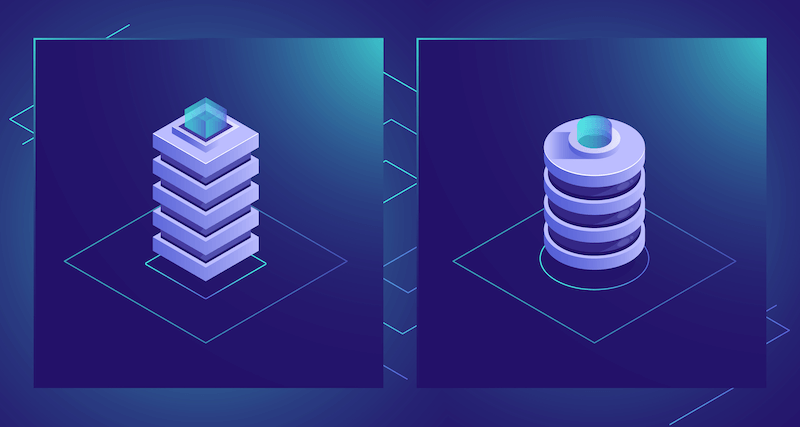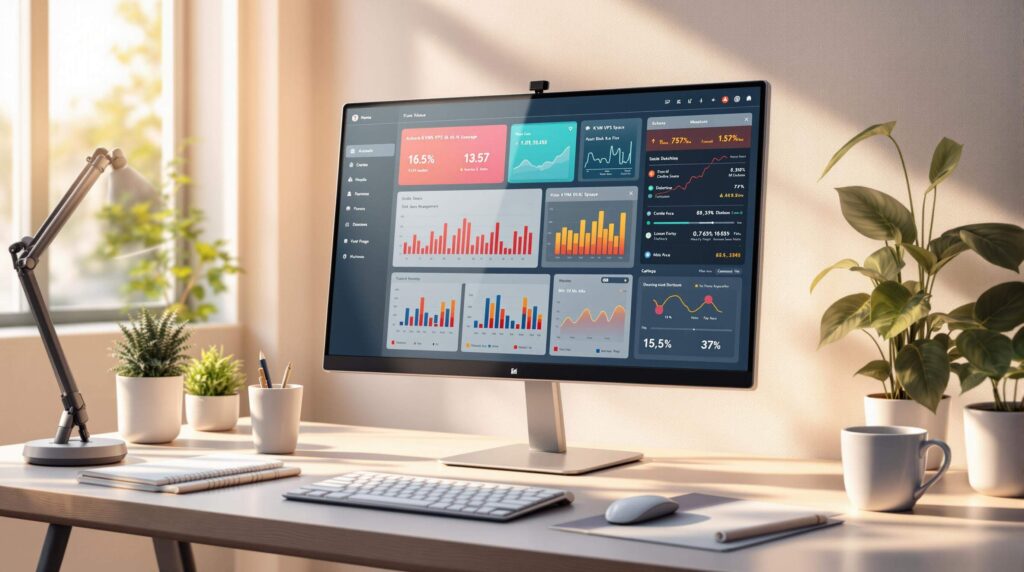DevOps accelerates development and deployment cycles, allowing teams to ship code faster and more frequently. However, this increased velocity often comes at the cost of security if it’s not integrated into every stage of the pipeline, making it crucial to adopt DevOps security best practices from the start. DevSecOps aims to embed security into the heart of DevOps workflows, ensuring that vulnerabilities are caught early, and systems remain protected without slowing down development.
Key Challenges in DevOps Security
The nature of DevOps—fast, collaborative, and automated—creates a unique set of security hurdles.
- Rapid Deployment: With new code pushed to production sometimes dozens of times a day, traditional security review cycles can’t keep up. This often results in unreviewed code making it into production, increasing the risk of exploitable flaws.
- Complex Toolchains: DevOps environments often use a mix of tools—CI/CD platforms, container orchestrators, version control, and monitoring systems. Each of these introduces its own vulnerabilities and misconfiguration risks.
- Shadow IT: Developers or teams might use unsanctioned tools or cloud services to speed up their work. These aren’t subject to corporate security policies and can create blind spots for security teams.
- Limited Security Awareness: Many developers and operations staff aren’t trained in secure coding or system hardening practices, making it easy for basic security principles to be overlooked.
Core Principles of DevSecOps
DevSecOps shifts security from a late-stage checkpoint to an integrated, continuous process throughout the lifecycle.
- Shift-Left Security: By implementing security measures early—during development and testing—teams can identify and fix issues before they reach production. This reduces cost, time, and exposure.
- Continuous Monitoring: Security doesn’t end once software is deployed. Continuous monitoring tools identify runtime anomalies, configuration drifts, and external threats as they happen, enabling a quick response.
- Collaboration: DevSecOps breaks down silos. Developers, security professionals, and operations teams work together, sharing responsibility for securing the pipeline and systems.
- Automation: Manual reviews and testing don’t scale. Automating tasks like dependency scanning, policy enforcement, and compliance validation ensures consistent, fast, and repeatable security checks.
These foundational principles form the basis of effective DevOps security best practices and enable a culture where protection evolves alongside development. DevOps security automation plays a key role in applying these principles consistently across fast-moving pipelines.
Secure CI/CD Pipelines
The CI/CD pipeline is the backbone of DevOps—and a frequent attack vector. Building a secure DevOps pipeline requires careful attention to each stage.
Source Code Repositories
Use platforms like GitHub or GitLab with strong access controls, enforce branch protection rules, and require signed commits to guarantee the integrity and authenticity of the codebase.
Secrets Management
API keys, passwords, and certificates should never be hardcoded. Use tools like HashiCorp Vault, AWS Secrets Manager, or environment-specific solutions to store and access secrets securely.
Build Environments
Use isolated, ephemeral build environments to ensure builds are not influenced by stale data or malicious tampering. Validate artifacts with checksums or hashes before deploying them downstream.
Code Signing
Sign your code and build artifacts to prove they haven’t been altered. This also allows systems and users to verify that the code originated from a trusted source.
Incorporating DevOps security tools into the CI/CD pipeline ensures consistent enforcement of policies, vulnerability scanning, and artifact validation at every stage.
Infrastructure as Code (IaC) Security
Infrastructure as Code (IaC) enables teams to define and manage infrastructure through code, promoting consistency and scalability. However, it also introduces potential security risks if not properly managed.
Vulnerability Scanning
Employ tools like Checkov, tfsec, and Terrascan to analyze IaC templates for misconfigurations and security vulnerabilities. These tools can detect issues such as open security groups, unencrypted storage, and overly permissive IAM roles, ensuring that infrastructure definitions adhere to security best practices.
Immutable Infrastructure
Adopt an immutable infrastructure approach where servers are replaced rather than modified. This practice reduces configuration drift and ensures that each deployment is consistent and secure, minimizing the risk of unauthorized changes or lingering vulnerabilities.
Version Control
Store all IaC scripts in version control systems like Git. This allows for tracking changes, facilitating code reviews, and enabling rollbacks if necessary. Implementing pull requests and mandatory code reviews can further enhance the security posture by ensuring that changes are scrutinized before deployment.
By integrating security into the IaC process, organizations can proactively identify and mitigate risks, ensuring that infrastructure deployments are secure and compliant from the outset.
Container and Kubernetes Security

Containers and Kubernetes have revolutionized application deployment, offering scalability and efficiency, but they require specific DevOps security best practices to avoid introducing risk. However, they also present unique security challenges that must be addressed to protect applications and data.
Image Scanning
Utilize tools like Trivy and Clair to scan container images for known vulnerabilities. Regular scanning ensures that base images and dependencies are up-to-date and free from security flaws, reducing the attack surface of containerized applications.
Least Privilege
Configure containers to run with the minimum necessary privileges. Avoid running containers as the root user and limit access to host resources. Implementing security contexts and Pod Security Policies in Kubernetes can enforce these restrictions, enhancing the security of container workloads.
Network Policies
Implement Kubernetes Network Policies to control traffic flow between pods. By defining which pods can communicate with each other, organizations can segment their applications and prevent unauthorized lateral movement within the cluster.
Addressing container and Kubernetes security is essential for maintaining the integrity and confidentiality of applications. By implementing these best practices, organizations can build resilient and secure containerized environments.
Access and Identity Management
Effective access and identity management are critical components of a secure DevOps environment. Proper controls ensure that only authorized individuals have access to systems and data, reducing the risk of unauthorized actions.
- Role-Based Access Control (RBAC): Implement RBAC to assign permissions based on user roles. This approach ensures that users have only the access necessary for their responsibilities, minimizing the potential impact of compromised accounts.
- Multi-Factor Authentication (MFA): Enforce MFA for accessing critical systems and services. By requiring additional verification methods, such as one-time passwords or biometric authentication, organizations can add an extra layer of security against unauthorized access.
- Just-In-Time Access: Adopt Just-In-Time (JIT) access models where users are granted temporary access to resources as needed. This minimizes the window of opportunity for potential misuse and ensures that elevated privileges are not left active longer than necessary.
By implementing robust access and identity management practices, organizations can significantly reduce the risk of unauthorized access and maintain tighter control over their environments. Integrating DevOps security automation into access controls helps enforce policies in real time and reduces the risk of human error.
Monitoring, Logging, and Incident Response

Continuous monitoring and effective incident response are vital for detecting and mitigating security threats in a timely manner. Implementing comprehensive logging and alerting mechanisms allows organizations to respond swiftly to potential incidents.
- Centralized Logging: Aggregate logs from various sources, including applications, infrastructure, and security tools, into centralized systems like ELK Stack or Splunk. Centralized logging facilitates easier analysis and correlation of events, aiding in the identification of anomalies and security incidents.
- Anomaly Detection: Deploy anomaly detection tools that leverage machine learning to identify unusual patterns or behaviors within the system. These tools can alert security teams to potential threats that may not be detected through traditional signature-based methods. DevOps security tools can also enhance threat detection by integrating with logging systems and automating alerts based on behavioral patterns.
- Incident Response Plans: Develop and regularly update incident response plans that outline procedures for identifying, responding to, and recovering from security incidents. Conduct regular drills and simulations to ensure that teams are prepared to act swiftly and effectively when real incidents occur.
Establishing robust monitoring and incident response capabilities enables organizations to detect threats early and respond effectively, minimizing potential damage and downtime.
Continuous Compliance and Governance
Maintaining compliance with industry standards and regulations is an ongoing process that requires continuous monitoring and enforcement. Integrating compliance checks into the DevOps pipeline ensures that security and regulatory requirements are consistently met.
Automated Compliance Checks
Incorporate tools like Chef InSpec and OpenSCAP into the CI/CD pipeline to automatically assess compliance with security policies and standards. Automated checks provide immediate feedback on compliance status, allowing teams to address issues promptly.
Policy Enforcement
Utilize policy-as-code tools such as Open Policy Agent (OPA) to define and enforce security policies across infrastructure and applications. This approach ensures that compliance requirements are codified and consistently applied throughout the development lifecycle.
Audit Trails
Maintain detailed audit logs that record changes to systems, configurations, and access controls. Comprehensive audit trails are essential for demonstrating compliance during audits and for conducting thorough investigations in the event of security incidents.
By embedding compliance and governance into the DevOps process, organizations can proactively manage regulatory requirements and reduce the risk of non-compliance penalties.
Conclusion
Integrating security into DevOps is no longer optional—it’s essential. A well-executed DevSecOps strategy, built on DevOps security best practices, ensures that security doesn’t slow you down, but scales with your velocity. By adopting best practices across code, infrastructure, access, and monitoring, teams can build robust, secure environments that are ready for whatever challenges modern software development throws their way. A secure DevOps pipeline enables teams to innovate quickly without compromising system integrity or exposing critical assets.
Power Your DevSecOps Strategy with VPS.us
At VPS.us, we know that a secure DevOps environment requires reliable infrastructure with full control and high performance. That’s why we recommend our KVM2-US plan, which offers 2 vCPU cores, 2 GB RAM, and 25 GB of SSD storage—ideal for hosting lightweight CI/CD tools, Git repositories, or development sandboxes. Take your DevSecOps pipeline to the next level with a VPS that gives you speed, security, and scalability from the start.



